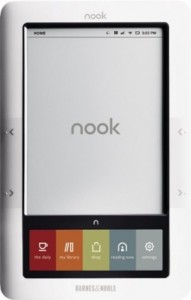 I hear a lot of independent authors say that their ebook sales at Barnes & Noble, Smashwords, iTunes, etc. are practically non-existent when compared to their Amazon sales. A lot of folks seem to have enrolled in KDP Select (which requires 90 days of exclusivity with Amazon), because it might give them a boost at Amazon, and, hey, they hardly sell any ebooks elsewhere anyway, right?
I hear a lot of independent authors say that their ebook sales at Barnes & Noble, Smashwords, iTunes, etc. are practically non-existent when compared to their Amazon sales. A lot of folks seem to have enrolled in KDP Select (which requires 90 days of exclusivity with Amazon), because it might give them a boost at Amazon, and, hey, they hardly sell any ebooks elsewhere anyway, right?
If you’re happy in KDP Select and don’t care that Amazon is your only source of revenue, then that’s fine, but this post is for authors who get nervous at the idea of having all of their eggs in one basket and/or would like to expand their reach and have fans from all over.
Before I get further into this post, I do want to remind you that Amazon is the biggest online bookstore out there, and you’ll probably always sell more ebooks there (though I’ve come across exceptions who sell extremely well in iTunes, for example, and aren’t that hot at Amazon). For myself, I earn $X,XXX a month at Amazon and $XXX at iTunes, Smashwords, and Barnes & Noble, with B&N being my second best earner overall.
So, how do you get on the radar in those places? I’m glad you asked…
The Free Ebook
I know not everyone is keen to give an entire novel away for free (and, honestly, there’s not much point, insofar as marketing goes, unless you have more out in the series, so the reader can go on to purchase those after enjoying the first), so before I jump into this, let me point out that you can make a short story into a free ebook. I’m a fan of using characters from your novel(s), so that the story works as a teaser to get folks into your world.
But I digress. Let’s talk about why this works.
Right now, thanks to KDP Select, there are a gazillion free ebooks at Amazon at any given time. It used to be easy to stand out over there if you had a freebie, because there weren’t that many of them, but it’s harder now. This isn’t as much the case in these other stores.
The main (perhaps only?) way to get a free ebook into these stores is to upload it to Smashwords, make it free there, and distribute it to the partner stores (iTunes and B&N being the most prominent). Because of the lag time (it can be hard to make an ebook free for a short time, for a “sale”), some authors just aren’t willing to go the free route.
Once I made my first novel free a few months ago, my iTunes sales and B&N sales grew a lot more pronounced. As I’ve mentioned elsewhere, by giving Book 1 away for free, I’m making more overall, because of the increased sales of the second and third novels in the series.
The Prominently Displayed Links
I’ve done lots of posts talking about how to use your blog to sell more books. Once you start getting visitors to your site, you’ll want to make sure it’s easy for them to find your books and give them a try. You’ll notice the cover art for my Book 1s (along with links to excerpts and bookstore sales pages) are prominently displayed on the side bar of every page of my site. I don’t want people to have to hunt around to give my stories a try. The whole reason this blog is here is to sell my books!
I’ve noticed that a lot of authors only include links to Amazon on their sites, and similarly they focus their social media efforts on directing people to Amazon. You can’t do that and then wonder why you don’t sell anywhere else!
I try to include links to Amazon, B&N, and Smashwords at the least (and I’m starting to work in the iTunes links as well). Even though Smashwords isn’t a big store, it’s a great option for your international readers (no hidden taxes), and the fact that it offers every single file format out there is another plus. I’ve had people send me fan mail and mention that they read the pdfs of my books on their computer screens. Yes, one can do that with the free Kindle app, too, but not everyone is aware of it or would use it if they knew about it. I know it’s hard to imagine, but some people just aren’t interested in shopping at Amazon!
You might also try some campaigns to target these smaller stores specifically. It’s a great time to do so because a lot of indies have pulled their books out of Smashwords, B&N, etc. due to the exclusivity clause in KDP Select, meaning you have that many fewer competitors in those markets.
As an example, I first started selling books at Barnes & Noble last year when I tinkered with a Goodreads advertising campaign. I made some ads that specifically targeted Nook owners and sent them to my book’s sales page at B&N.
Taking Advantage of Smashwords Sales and Specials
A couple of times a year, Smashwords does big weekly sales to encourage people to try new authors. You can easily participate simply by checking a couple of boxes. I gave away over 200 copies of Encrypted last week, and sales of my non-free ebooks have been up ever since. I did a couple of tweets about the freebie, but most of those downloads came from folks Smashwords was pulling in via their marketing efforts (they were plugging their sale all over the ‘net).
In other words, I didn’t do anything except enroll my ebook, and I got new readers (and sales) out of the deal.
It pays to be aware of these types of opportunities. At Smashwords, you can also use their coupon generator to give away free or discount copies (for those who don’t want to simply make a book free indefinitely). This can be a good way to monitor where book sales come from, since you can see when coupons are redeemed.
Those are three methods I’ve used to increase my sales at other stores. If you want to recommend any others, or share your experiences with smaller venues, let us know in the comments.
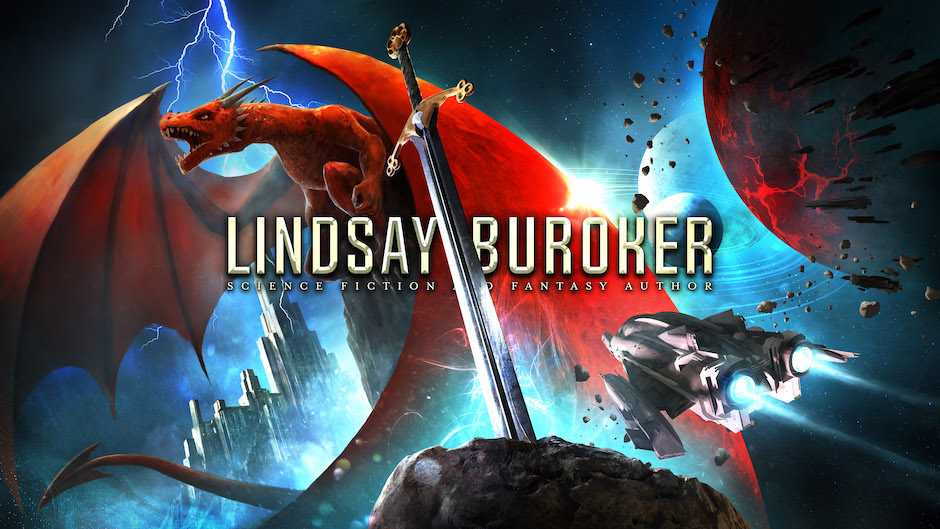
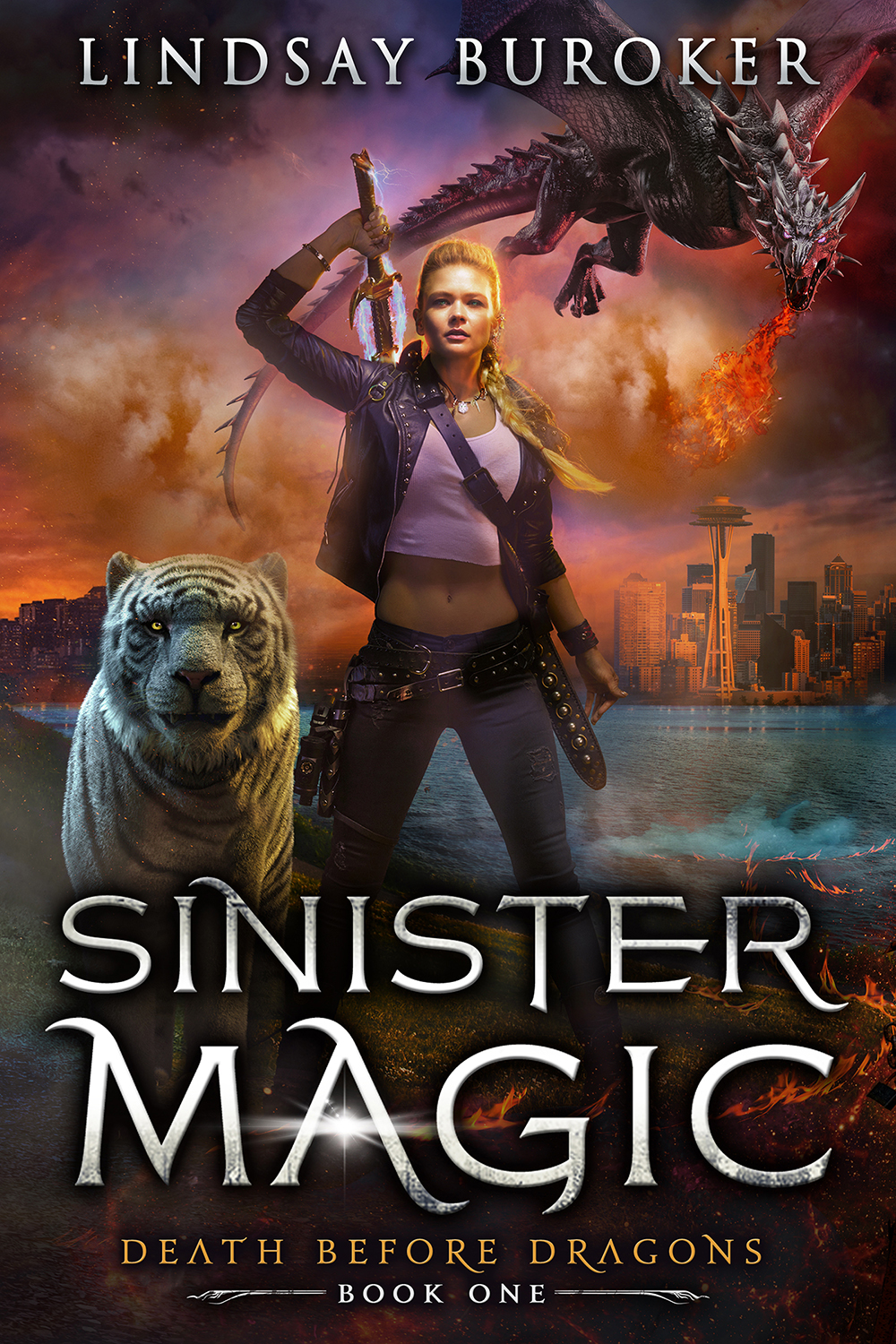
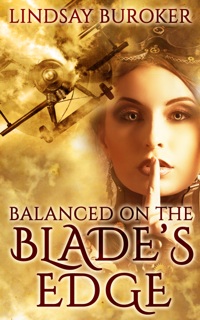
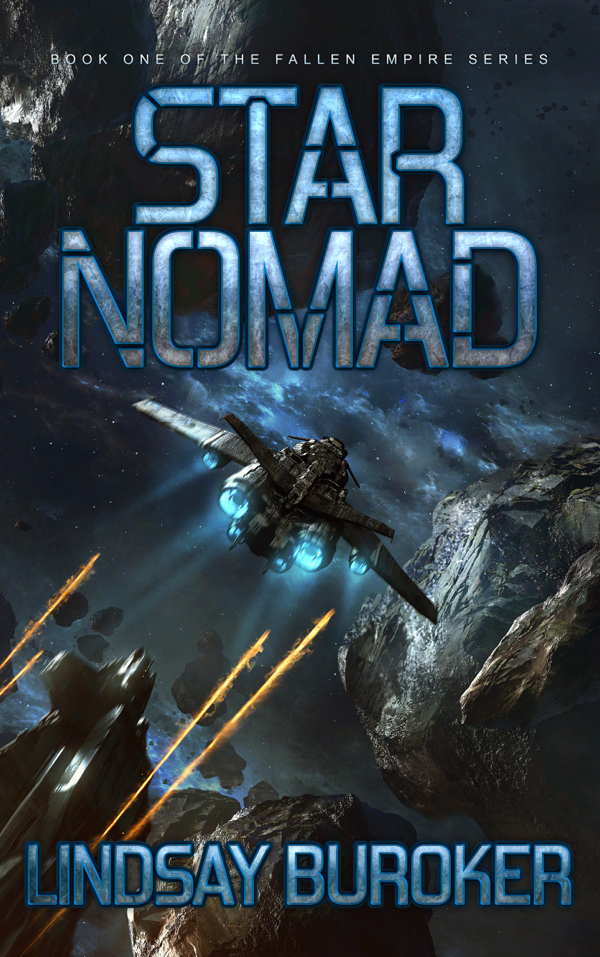
I’d like to second the link problem. I can even understand it when someone doesn’t put three labelled links in a tweet, what with the character limit. But when there’s enough room, giving just one link seems really short-sighted. It’s happened to me several times that in a blog entry advertising it or on the official site of the book there was only a link to amazon, but some digging found the book at Smashwords, too – and if it is available at a site where everybody with either a credit card or a paypal account can buy it, no matter where they live or which ebook format they prefer, why in the world would you not link to it?
I’ve tried the free kindle app, to read freebies only offered at amazon and to test files I converted to mobi to give to kindle-owners, and really didn’t like it. I’d move the cursor over it, and all the flippin time the context menu for the dictionary would fly out.
You downloaded the Kindle app, Anke? I didn’t think you’d do such a thing to your computer. 😉
I don’t mind the version I have on my iPad, though I didn’t care for the note-taking ability (I should say, taking notes was find, but I didn’t see a way to go through them all easily at the end).
It’s a good point, too, that Smashwords works for people who only use PayPal. I usually have money in that account, so I wish I could use it for Amazon purchases.
I don’t like how amazon handles ebooks, but I try to stay somewhat reasonable. 😉
I’ve had a Paypal account for years before I got a credit card to use on international sites that didn’t accept Paypal. Credit cards are not nearly as ubiquitous here than they seem to be in the US.
Credit cards are ubiquitous in the US, but, in some cases, I’ll shop at one merchant over another based on whether one has Paypal, because I don’t really want to go into another room, dig out a credit card, and enter all the numbers and shipping information by hand when I can just sign into my Paypal account to accomplish the same stuff.
To bring this back to a relevant topic, I’ll make sure Paypal is an option when I set up my own web store to sell my books from my site. 😛
I’m not at the point of selling ebooks yet, but I’m watching everything as prepare my novel. I had been thinking off and on about the KDP thing, but I was worried about cutting off B&N and Ibooks specifically because several of my friends buy through them. After pointing out less competition because of KDP, it makes me halt in jumping onto that Amazon raft. I’ll just keep watching and see what’s going on when I get there. I may not be a pantser writer, but I am in marketing.
You can always try it in the beginning and then switch over after the 90 days are up (if it isn’t helping). Signing up for Amazon exclusivity becomes iffier once you have a following and you know you have readers using different devices.
Pingback: Can You Self-Publish Your Way to a Big Deal? Guest Post from Lindsay Buroker | David Gaughran
Great post, Lindsay! You lay it all out very coherently and I have to say, I’m following your advice 🙂 Congratulations on your sales and I’m sure you are going to continue to do well along this indie path.
Thank you, Sarah! I’m glad you found the post useful. 🙂
I promote my Smashwords links. From what other writers I know have told me, I get a higher % of sales on Smashwords than many.
Somehow, I don’t think it’s a coincidence. 🙂
Also, some folks don’t realize… the Kindle app for computers can’t run on PowerPC Macs, which some folks still use. *raises hand*
What e-mail list software do you recommend?
Carradee, I use Aweber, but it’s on the expensive side (I used to use it for the day job, so just kept the same account). A lot of authors like MailChimp. They’re free for the first 1,000 (maybe 2,000) subscribers and seem to do everything you’d need.
I have no e-book sales at Barnes & Noble–and I know the reason why. I don’t know if this is a generic problem or not.
Now I’ve sent two emails to Barnes & Noble to ask/complain about the issue–but they’ve ignored me.
To explain the problem, let me use one of my e-books and contrast how Amazon works versus Barnes & Noble.
“My Body, My Ashes” is a medical thriller (short story). On Amazon, you can search by my name and/or title and the e-book will appear in your search results. You can also enter in my key words (e.g. “organ theft”) and it will also appear in your search results.
On Barnes & Noble, their search engine never finds any of my keywords! The only way my e-book will appear in your search results is if you enter my name and/or title.
Of course, that’s fine if you’re a well known author, but if you’re like me, you’d like readers to be able to find your e-book via subject matter.
Does anyone else have this problem? It’s difficult to believe it’s just me.
I’ve come across an article that I think does not cover that exactly, but points out some problems with browsing and finding books on B&N, and thought it might be of interest: http://www.huffingtonpost.com/2012/03/14/nook-versus-kindle-self-publishing_n_1343392.html
Thanks, Anke!
That article does cover my problem. To wit, B&N doesn’t care about the self-published author.
I used to have all six of my e-books on Amazon & B&N, but in February I removed four of them from B&N–opting for the Kindle Select Program.
I think I’ll remove the other two in the near future, and I won’t even bother publishing my seventh one (scheduled out in a week or so) on B&N.
I’d say B&N has an inferior internal search engine, but I’m not sure that’s the same as not caring about self-published authors. They have a lot of chats with successful (there) indie authors, and anyone is free to join in on the chats. I haven’t yet, but I always see them mentioned on the PubIt dashboard.
Of course, you’re welcome to publish your books wherever you wish.
I wonder if that’s what’s happening to me! I barely sell anything at all on BN and I don’t know why.
Great tips. Since I own a Nook, I’ll not be going the KDP Select route either. I want to be able to read my books on my Nook.
I’m following your advice and footsteps by offering free reads in both the series I’m launching this year.
And, yay, I finally found an editor I like. After another cost me a leg…an eye, too, I think . lol
Glad you hear you found an editor that works for you, Mary. Keep up all the good work!
See, I don’t know why, but for me it’s the opposite. I’m selling more than twice as much on Barnes and Noble as I am on Kindle, where I’m barely selling one or two a day. I have links to both sites and everything, but it’s just like a weird fluke.
Anyway, thanks for the informative post, Lindsay!
lindsay, does smashwords need to contact the author for us to participate in the weekly sales event (ie, invitation only), or is there a way to opt in?
thank much,
adan
Adan, I think, in the past, they’ve sent out a mass email to all authors (they only do these events about twice a year). They also post regular site updates here: http://www.smashwords.com/about/beta
If you do the free thing on Smashwords, how does that effect your Amazon listing? Usually, Amazon will happily lower your price to the lowest price out there when they find out about it. It’s in their contract.
Smashwords occasionally surprises. Ben Brown’s new hit, “Enhanced”, actually sold more there than at Amazon when it was first released. Don’t know what the ratio is now. Wish my “Children of Destruction” did as well, but it just plods along.
Al, Amazon will indeed price-match in many cases, though it can take them quite a while to get around to it. This is a how a lot of us get free ebooks into Amazon without doing the KIP-exclusivity thing.
Just wanted to thank you for a great post.
Thank you for that helpful info! I’m still hoping that Amazon will make Pretty Pink Planet free. (It’s free on Smashwords.) I added my latest ebook (story collection) to Kindle Select and hope to take advantage of their promotions. I took part in the Smashwords promotion a few weeks ago.
Interesting post. I’m a little surprised because most of my sales have come from iTunes and on my new book, I had 2 sales already from B&N.
🙁 I’ve done all these things and still zero sales at BN this month and $13 there last month. So discouraging! People say they’re selling better at BN because of select and less competition, but I’m still selling massively better on Kindle.
Thanks for the advice. I do this, too, though not as systematically … Yet. My ebooks are all free for five days every 90.
i’m glad i’m signed up for the comment stream, i’d forgotten that so many ideas i like i originally saw here, from have vol 1 or first in a series free, to my book images on the sidebar
thanks so much 😉
Pingback: How to Sell Your Ebook in a Global Market | CindaFernando.com
I’m on the opposite end of the spectrum and don’t know how I got there. I have versions of my ebook on Amazon, Smashwords and B&N (through PubIt) and find that I sell many more books for the NOOK directly through bn.com. I’ve sold far fewer books on Smashwords and haven’t sold a copy on the Kindle in a few months. I’m not sure what I’m doing for my sales to work out in this way. But considering the fact that so many sales are coming from B&N, I’m very iffy about signing up for KDP Select for my next book.
Great article! Quick question — when you say you sell $X,XXX with Amazon and $XXX with smashwords, I couldn’t help but wonder how high or low the numbers that those Xs represent could actually be.
Would you say for every dollar you sell with smashwords, you sell…2 dollars with Amazon? Three dollars? Ten?
Thanks in advance for helping a newbie — great blog!
Hi Michelle,
My earnings will vary a lot from month to month, depending on where I am in the release cycle (i.e. New release this month? Three months since the last release?), so it’s easier to generalize here. I’m earning about seven times more from Amazon than I am from B&N in any given month. iTunes is creeping up there, thanks to all the international sales there, and that accounts for the majority of my Smashwords earnings. Usually I just get a trickle of sales from the Smashwords store itself (unless I run a special and give out a coupon or some such). Maybe $100 a month average.
I appreciate your help! It’s so much easier to be able to compare the amounts in *some* way. I sell through Amazon now, and I had no way of knowing if adding Smashwords would put another 100 bucks in my pocket or 1,000. Now I have some sense of it. Thank you.
Boy am I glad I found out about Smashwords today!
Sitting beside me on the metro tonight was a young woman with an eReader. I glanced over to see what format it was, and sure enough, it was an iPad. “Well,” I thought, “she can’t be reading my novel, its only on Amazon.”
That’s when I knew I had to diversify, and find other options besides the Kindle.
I’ve been preparing three new ebooks for publication, and dreading the prospect of selling them exclusively through Amazon, like six of my current novels.
My new ebooks on Teaching ESL, Montana History, and Writing are great, and deserve to reach more readers than just the Kindle can deliver.
It’s my understanding that anybody can read Amazon books on anything, really.
Amazon provides all kinds of applications free, including a cloud reader, so that their sales aren’t limited by device.
It looks like that’s the case, but some people might be having problems with it.
https://itunes.apple.com/us/app/kindle-read-books-ebooks-magazines/id302584613?mt=8
If Amazon has a new app that allows anyone with an ipad to read their books, then why do people want to use Smashwords to format their book for the iStore?
It seems like each of these three big retailers, Amazon, Apple, and B&N are all coming out with their own apps so people can read books selling in competing stores.
Doesn’t that sound a bit strange to anyone? How long will it be before they decide to get rid of the apps and just come up with a standard format for all ebooks?
I had a helluva time getting my newest book Write Now! 20 Simple Strategies for Successful Writing published as an epub. It came up with a lot of stupid errors, which I had to take time to figure out.
Turns out it was just a numbered list in Writing Strategy #17 that was the hangup. Still, that was time I could have been writing more meaningful stuff like…well, I guess this is it.
First, it’s not quite “anything” – you can’t read Amazon books on another dedicated ebook reader.
Second, it would be rather inconvenient to have to use different reader software depending on where you bought an ebook.
Third, I occasionally use Kindle for PC, and find it very annoying that something pops up as soon as you (accidentally) click on the page.